Military Diving
Military Diving
In the past decade Southeast Asia, and more broadly the Indo-Pacific region, has witnessed a rapid expansion in maritime activity (including shipping and both coastal and fixed offshore infrastructure). With this has come a relative acceleration and proliferation of sensor systems capable of detecting surface and airborne tracks through the deployment of anti-access and area denied defence systems. In an era of great power competition, previously dormant nations are becoming regionally assertive through unconventional methods and non-military conflict. Modern modalities of conflict, such as Grey Zone and Hybrid Warfare, are now globally employed in the maritime domain.
As emerging and future maritime technology and capabilities continue to evolve it is important for international defence forces to modernise and re-invest in current military diving capabilities. The potential of emerging and future maritime capabilities is yet to be fully realised and, perhaps, they may never reach autonomy in the purest sense.
Traditional military diving capabilities include Search and Recovery (SAR), Explosive Ordinance Disposal (EOD) Hydrospatial Survey and Combat Diving. Some modern technologies have been introduced into service by the Australian Defence Force. However, as the technical readiness level of maritime autonomous systems is still maturing, it is important for the Australian Defence Force considers unconventional maritime surface and subsurface capabilities, combining crewed, uncrewed, and unattended sensor systems to counter the modern modalities of conflict current active in the maritime domain. In today’s great power competition era, military diving remains a vital part of every nation’s maritime warfare capability.
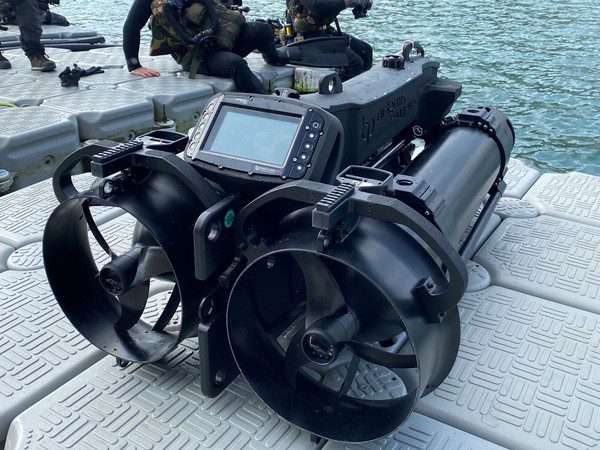
Military Diving Challenges
With the proliferation of adversary coastal and seabed sensor systems, military divers are required to dive for a longer duration, project further underwater and operate complex sensor systems. Traditional methods of diving subsurface for long distances, or in strong ocean currents and tidal waters, are physically arduous and require divers to consume a large quantity of breathing gas from the limited supply of their diving life support systems, particularly wearing full combat equipment, personal weapon systems and other mission essential items or ‘payload’.
In the current continuum of conflict, military divers will be required to conduct long-duration, low activity diving utilising a combination of diving life support systems (open and closed circuit) and long-range clandestine underwater propulsion systems. Military diving equipment must be robust, reliable, compact and modular in construction. Ideally, these systems should be integrated with communications, acoustic sensors, sonars and Position, Navigation and Timing (PNT) aids.
Military Diving Training
Military diving is a specialist capability requiring divers to operate in an austere and hazardous underwater environment. Training divers safely requires an ability to track, locate and, in certain circumstances, communicate with them. To train military divers to be operationally effective, realistic training scenarios require them to be unmarked, that is no visible sign of the divers on the surface.
To achieve high confidence in mission success military divers are trained to overcome the challenges associated with long duration, low activity diving, including the human factors of diving gas consumption, physical & cognitive ability and diver thermal protection. Equipping military divers with underwater propulsion devices, communications, acoustic sensors, sonars and Position, Navigation and Timing (PNT) aids supports their integration and interoperability with a larger surface and subsurface support platforms. More importantly, it increases high confidence in mission success and diver safety.
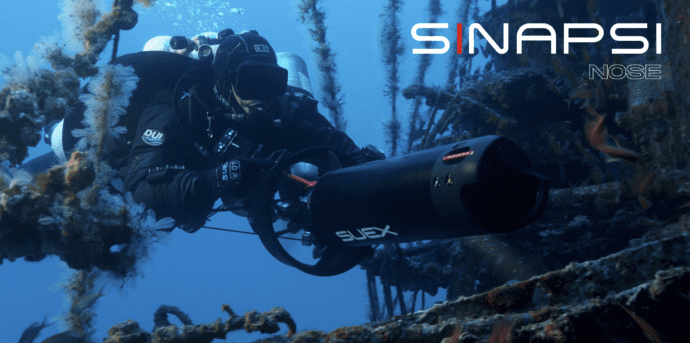
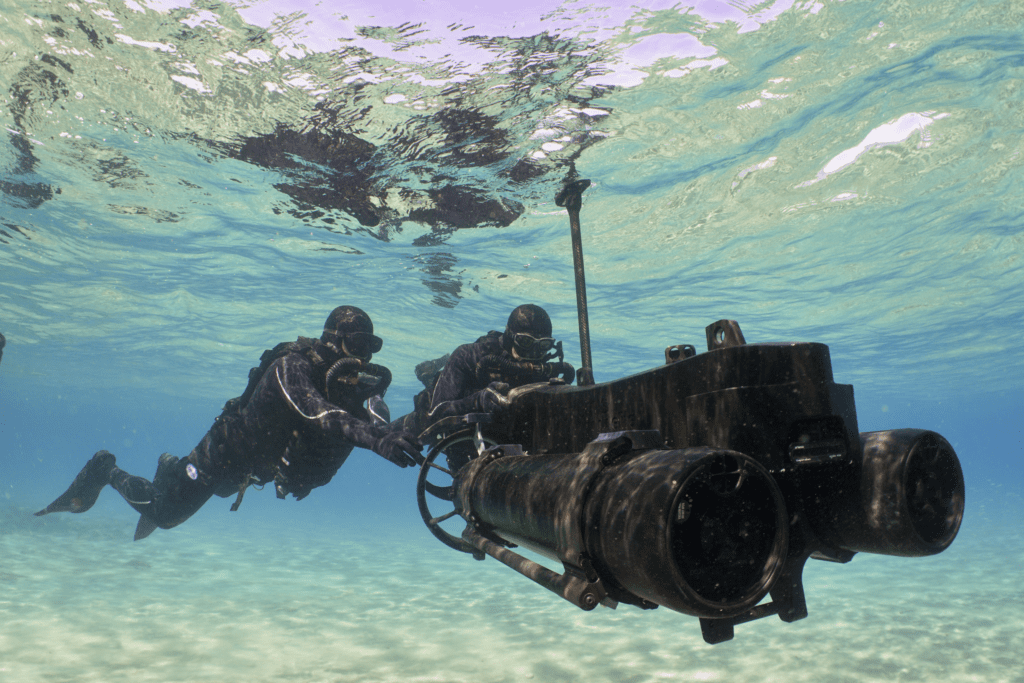
BlueZone Group Industry Support Partnerships
BlueZone group works closely with many of the world’s leading original equipment manufacturers. For military diving, Blueprint Subsea and SUEX are experts in their respective fields of design and manufacturing of specialist underwater equipment and capabilities for defence markets. As a development partnership, SUEX and BluePrint Subsea create an unstoppable mission capability.
Blueprint Subsea’s leading range of compact, robust, intuitive and affordable underwater acoustic products has been meeting the rigorous demands of the global subsea, offshore and defence markets since 2006. Specialising in imaging sonars, acoustic positioning beacons and diver navigation systems. Designed in-house and using advanced manufacturing techniques, they develop outstanding systems without compromise.
SUEX Advanced Diving Vehicles (ADV) represent cutting edge technology in underwater mobility. Performance, reliability, manoeuvrability, and complete product range of single, dual and dual Elite systems are the cornerstones that make SUEX the undisputed leader in the underwater diver propulsion market.
BluePrint Subsea Products
Star Fish Side Scan Sonars – Challenging the shape of the industry – side scan sonars with a difference. The StarFish range offers towed, hull-mounted and OEM systems that give exceptional image quality in a compact and rugged form factor. Specifically designed for shallow water survey work, StarFish systems are available in 450kHz for increased range and 1MHz for improved resolution.
Seatrac Positioning & Data – Compact form meets robust function. SeaTrac is a high accuracy USBL acoustic positioning system for real-time ROV, AUV and diver tracking. With a 1000m range and the ability to both track and exchange data with multiple assets, the list of potential applications is endless.
Artemis Diver Navigation – Tried, tested, and trusted by Special Forces and Emergency Services the world over. The Artemis range of Handheld Diver Navigation Systems offers covert navigation, sonar imaging and acoustic communication capabilities in an extremely compact form factor. The Artemis Diver Navigation range includes:
ArtemisPro – ArtemisPRO is designed specifically to assist Special Forces divers in covert dead reckoning navigation tasks and the identification of seabed targets. The ArtemisPRO incorporates a Doppler Velocity Log (DVL), multibeam imaging sonar, acoustic communication and positioning beacon, camera, dive-light and detachable floating GNSS receiver buoy. Trusted by Special Forces the world over.
ArtemisHHS – ArtemisHHS can be equipped with either the Oculus M1200d or M750d multibeam imaging sonar. The ArtemisHHS is additionally fitted with a camera and dive-light for image collection and a communication and diver tracking beacon for improved diver safety. All sensor data is logged throughout the dive and available to view through NavPoint on returning to the surface.
ArtemisLITE – Pure underwater navigator. GNSS navigation capability for recreational, commercial, Search And Rescue (SAR) and research divers. Designed to assist recreational, commercial, Search And Rescue and research divers in navigating between underwater waypoints. Diver positioning is acquired using a floating GNSS receiver buoy and displayed on a map overlay.
ArtemisSX – Developed in partnership with SUEX, the ArtemisSX can be diver handheld or SUEX Diver Propulsion Vehicle (DPV Mounted. The Artemis SX range of navigation systems offers covert navigation, sonar imaging and acoustic communication capabilities for extended tactical missions.
ArtemisELITE – Developed in partnership with SUEX, For greater mission capability the Artemis Elite pairs Blueprint Subsea navigation and imaging systems with SUEX DPV propulsion units.
ArtemisHMD – Artemis-compatible Head Mounted Display (HMD) with embedded PC. The Artemis HMD provides a mask mounted, full-colour binocular display reproducing the Artemis interface for tactical operations.
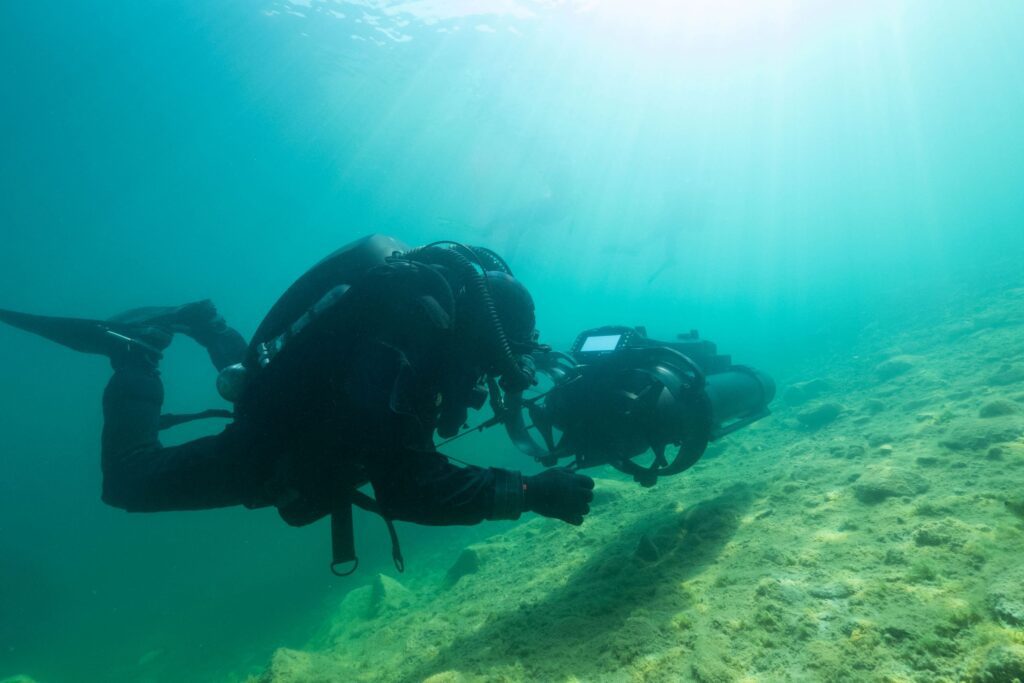
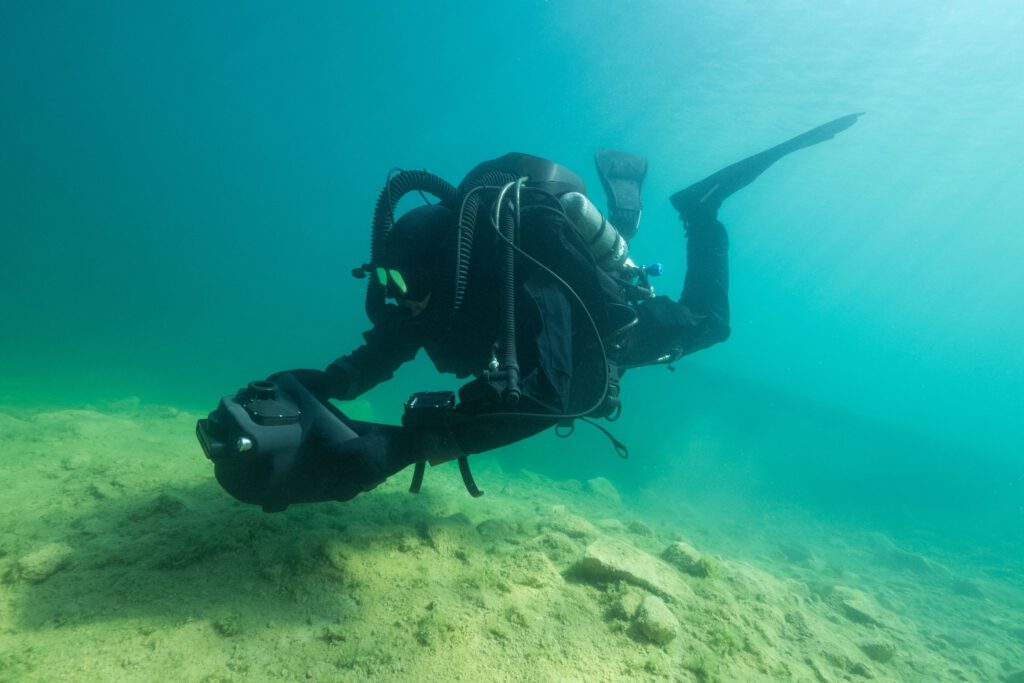
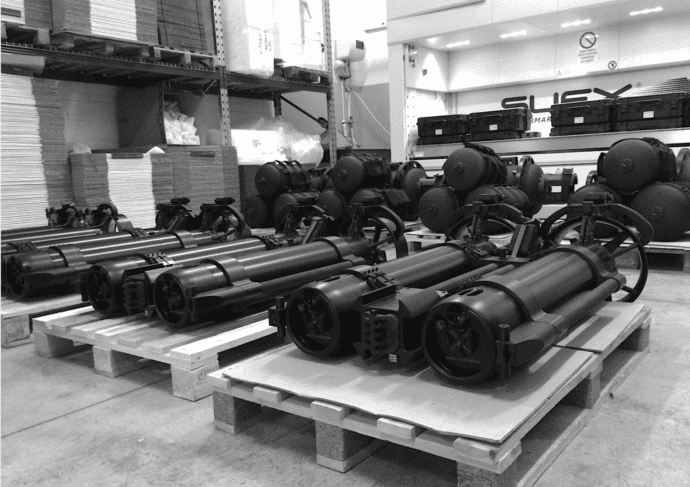
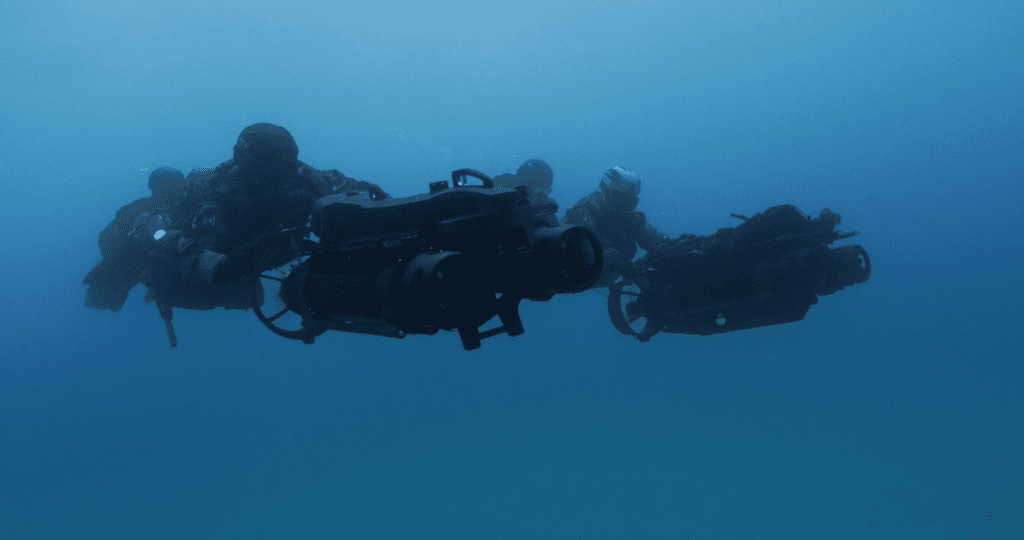
SUEX Products
Single Diver Propulsion Vehicles DPV – SUEX manufactures a variety of propulsion units for both the civilian and defence market. The four main DPVs designed for the defence are the single Nero XJ, Nero C, Nero 1 and Nero 2 DPVs. The SUEX single Nero 1 and 2 can also be configured as a dual system using either the SUEX standard coupling frame or the more advanced BP Elite Coupling frame. For extended range, the dual propulsion systems can be manufactured with an external connector where a second additional Off-Board Battery (OBB) pack can be connected.
OBB Battery Pod – 36V – The OBB Battery Pod is a 200m rated offboard battery transport container that can accept 36V Nero C and Nero1 batteries. The OBB pod may be mounted to the DPD system using the OBB mount system or towed independently. Connection to the DPV is made using the heavy-duty wet connect cables (.8m) or (1.5m). The DPV must be OBB ready to accept. Optional uses for power supply possible.
STANDARD COUPLING FRAME NERO 1 & NERO 2 – The Standard SUEX coupling frame is designed to fit either two NERO 1, or NERO 2 DPVs as a dual system and fits into the 533mm submarine torpedo tubes.
COUPLING FRAME BP ELITE NAV SYSTEM – The SUEX NERO BP Elite system couples either two NERO 1, or NERO 2 propulsions units (left + right) in order to obtain the required thrust, speed and range. The modular SUEX design offers operational flexibility in being able to transport and utilise as individual diver propulsion units or fully assembled as a dual propulsion system. The military diver can configure for operational mode on the surface or submerged in a matter of minutes. Disassembly for extraction is equally simple. A patented wireless IR comms system keeps the paired system in sync during operation. DPD OBB series has an external Subconn Wet-Connector that allows for supplemental offboard battery power for extended range missions using the SUEX OBB Battery Pod.
SUEX Dry Transport Containers (DTC) – The SUEX Dry Transport Container is a rigid and incompressible container, therefore depth variation does not change its volume while keeping the buoyancy constant. It is essential to spread the weight of the payload contained within the DTC and ensure the container is horizontal and neutrally buoyant prior to diving subsurface. To assist with the DTC that allow you to add ballast externally and internally.
SUEX Accessories – SUEX manufactures all its own accessories, such as the multipurpose handtruck, OBB mounting rack, equipment/payload mounting rack, LI-ION and NIMH DPV battery packs and charging units, Series 3 Propellers, DPV tow cords, and the SUEX Y -Harness for the DPD/DPV pilots.
